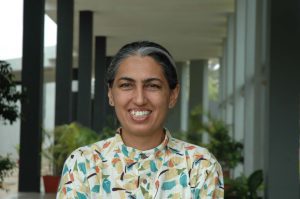
- Home
- India
- World
- Premium
- THE FEDERAL SPECIAL
- Analysis
- States
- Perspective
- Videos
- Sports
- Education
- Entertainment
- Elections
- Features
- Health
- Business
- Series
- In memoriam: Sheikh Mujibur Rahman
- Bishnoi's Men
- NEET TANGLE
- Economy Series
- Earth Day
- Kashmir’s Frozen Turbulence
- India@75
- The legend of Ramjanmabhoomi
- Liberalisation@30
- How to tame a dragon
- Celebrating biodiversity
- Farm Matters
- 50 days of solitude
- Bringing Migrants Home
- Budget 2020
- Jharkhand Votes
- The Federal Investigates
- The Federal Impact
- Vanishing Sand
- Gandhi @ 150
- Andhra Today
- Field report
- Operation Gulmarg
- Pandemic @1 Mn in India
- The Federal Year-End
- The Zero Year
- Science
- Brand studio
- Newsletter
- Elections 2024
- Events
- Home
- IndiaIndia
- World
- Analysis
- StatesStates
- PerspectivePerspective
- VideosVideos
- Sports
- Education
- Entertainment
- ElectionsElections
- Features
- Health
- BusinessBusiness
- Premium
- Loading...
Premium - Events
The need of the hour is media literacy, which imparts the ability to access and critically analyse news
The Karnataka government has proposed a fact-check body, a ‘misinformation combat cell’.
The idea is to curb misinformation and ‘fake news’, said the Karnataka IT and BT Minister, Priyank Kharge. The body will not only have a fact-checking team, but also an oversight committee, an analytics team, a capacity building team, nodal officers and so on. The oversight committee promises to include key members from backgrounds ranging from information technology, science, police, law, cyber security to civil society.
In this, the Karnataka government is following in the footsteps of the Central government that notified a rule that would give the Press Information Bureau (PIB) powers to fact-check any information about the government and demand that it be taken down from online platforms. The Central government’s plans are on the back-burner for now, for various reasons, including petitions in courts.
Misinformation is not new
Misinformation is not a new phenomenon. It has been around since time immemorial. Myths and history all across the world cite instances where misinformation was used as political tool, a battle manoeuvre, satire and of course, to woo people – as propaganda.
There is, however, no doubt that with the coming of the internet, especially social media, misinformation has got wings and has really taken off. The structure, the affordances of information platforms, search engines and social media are such that misinformation multiplies by geometric progression and goes viral in a matter of minutes. And, what is more, a 2020 research by First Draft, a coalition providing guidance on how to verify content from the social web, showed that “effective disinformation communities are participatory and networked, while quality information distribution mechanisms remain stubbornly elitist, linear and top-down.”
Fact-checking and the media
Fact-checking is not exactly new either. It has been a part of pre-publication gatekeeping for a while, especially in the West. Fact-checkers have been employed by media houses to proof read and verify facts and statements written by reporters. Their job is to check and verify the credibility and accuracy of what has been written before the articles goes to press.
As a formal part of journalism, its roots can be traced to the 1920s when Time magazine started a fact-checking unit to ensure that what went into its publication was true, accurate, precise and authentic—it was a part of the verification process that distinguishes journalism from gossip or other forms of information dissemination.
When traditional newspapers in the West began to lose revenue as advertising moved online, fact-checking departments have “shrunk, merged with copy-editing desks, or eliminated altogether,” said Alexios Mantzarlis, former head of the International Fact Checking Network (IFCN) in a UNESCO publication, Journalism, ‘Fake News’ and Disinformation: A Handbook for Journalism Education and Training.
Proliferation of fact-checking units
Similarly, fact-checking outside journalism, post-publication, began in some ways in 1994 when the website Snopes.com was set up to bust urban legends in American popular culture.
Fact-checkers who worked outside of journalism focused mainly on political advertising, campaign speeches and manifestoes. One of the first significant such projects was Factcheck.org, a project of the Annenberg Public Policy Centre of the Annenberg School for Communication at the University of Pennsylvania, set up in 2003. The work it did during the 2004 vice-presidential debate and the 2012 presidential election brought political fact-checking to the fore.
What really set off the trend of political fact-checking was the 2009 Pulitzer Prize for national reporting to PolitiFact, a fact-checking project set up in 2008 by the newspaper St. Petersburg Times (now called the Tampa Bay Times). More organisations began fact-checking claims and statements made by politicians. It was deemed necessary for an informed citizenry to know what exactly their political representatives were claiming and how true those claims were.
By 2016, with terms like ‘fake news’ and ‘post-truth’ coming into the popular lexicon and with the realisation that there was a surge in misinformation all over the world, fact-checking units and organisations proliferated – while several still came from legacy media houses, NGOs, civil society and other organisations jumped into the fray, not just checking political claims but also debunking viral hoaxes.
A formal coming together of fact-checking and fact-checking organisations started in 2014 when Poynter Institute, owner of the St Petersburg Times held the first Global Fact-checking Summit. The next year, Poynter started the International Fact-checking Network (IFCN). The recently-concluded Global Fact in S Korea was its tenth edition.
Irony is inescapable
Given that post-publication fact-checking outside of journalism was started to check political statements and manifestoes, and to keep politicians in check, the irony is inescapable that governments, and therefore, politicians are now using this tool ostensibly to ensure that what reaches the public is correct and true and does not cause harm.
It is worth pointing out here that in the recent past, fact-checkers themselves have become the target of the ire of some politicians and citizenry all over the world, including India. Some have even had to spend some time behind bars. Therefore, when governments say that they plan to start fact-checking units, the misgivings that arise within the fact-checking community and within journalism are not entirely misplaced.
The Editors Guild of India has expressed concern over governments proposing fact-checking units and said that these should not become a tool “to clamp down on voices of dissent”.
The world, and India, especially, has seen what harm can be caused by misinformation on social media and apps like WhatsApp. However, despite the best efforts of fact-checkers to keep up with the virality of misinformation, the efforts of some platforms to automate and therefore speed up fact checking, debunking takes place only much later, and sometimes much after the damage has been done. It is, necessarily a slow and time-consuming process.
Need for media literacy
Therefore, fact-checking becomes a band-aid fix to a larger, bigger problem. The need of the hour, really is media literacy. Media Literacy aims at imparting the ability to access and critically analyse messages from the media so that people can make informed decisions about everyday issues, ranging from health and work to politics and policies. Or, to borrow from the sub-title of Bill Kovach and Tom Rosenstiel’s book, Elements of Journalism, ‘What newspeople should know and the public should expect’.
Most countries that do not have a misinformation problem are those that have media literacy programmes in their schools. Finland for instance, tops the Media Literacy Index 2023 for Europe. Denmark comes second, followed by Norway. In Asia, the Philippines became the first country in 2017 to make media and information literacy part of its high school curriculum, according to a Google blog.
In India, though mass media studies have been introduced through the National Council for Education Research and Training (NCERT), no formal approach has been made to include it in the school curriculum. The NCERT and the Central Institute of Education Technology (CIET) have held a few workshops and training programmes on media literacy for educators and instructors.
The Central Board of Secondary Education (CBSE) has partnered with Meta (formerly Facebook) to run a digital safety programme for secondary school students. The New Education Policy only offers a nod to it. On the other hand, several non-government organisations, some larger platforms like Google with its Google News Initiative and states like Kerala have been working to help spread media literacy among the young, the old, and a range of demographics.
If the governments – central and state – are really serious about getting rid of misinformation, the way forward really is to teach young people in schools and colleges critical thinking and media literacy.
(Kanchan Kaur is Dean, Indian Institute of Journalism and New Media, Bengaluru. She is also an India assessor for the International Fact-Checking Network.)
(The Federal seeks to present views and opinions from all sides of the spectrum. The information, ideas or opinions in the articles are of the author and do not necessarily reflect the views of The Federal.)



